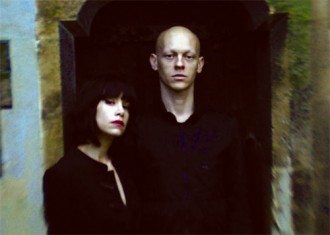We Fell To Earth WE FELL TO EARTH (InStereo)
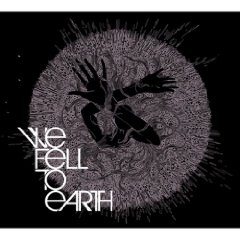 Release date 30 November, 2009
Release date 30 November, 2009
It’s now mid November and about the time that we feel we can relax a spell and spend our time moppiing up the last great live gigs of the year, while trundling back in history to select our best moments of 2009. It’s been a fantastic album release and gig year with much to go through. Frankly, one doesn’t expect (at a time when ‘best of’ seeds blossom) to continue to receive great records now, but they still keep rolling in…
We Fell To Earth is Wendy Rae Fowler from the USA and UK’s Richard File of U.N.K.L.E. fame. The eponymous album echoes the duo’s first meeting at the Rancho dela Luna Studios out in the wide open spaces of the High Desert of California. Opening track ‘Spin This Town’ could not be more spacial and distant. It’s dominated by a rolling rhythm section and ambient vibe, occasionally disturbed by distant vocals. But it’s with ‘Lights Out’ that the album begins to make its mark. There’s a strong melody, haunting vocal from Fowler, Tex-Mex guitar passages, and a cinematic ambience reflective of a Western movie. ‘Sovereign’ is similar but is dominated by ghostly vocals and a constant electronic click - highly distinctive and pleasant. ‘The Double’ goes upbeat with the vocals becoming clearer and up-front. There’s the constant hum of a guitar with the clatter of drums never far behind. ‘Burn Away’ travels down a darker highway quietly before it bursts into instrumental life with an Aboriginal feel. Eventually a ghostly duette vocal arrives to conclude the song. ‘Careful What You Wish For’ is another highlight while closing track ‘Deaf’ is to be the new single and justifiably so as one of the albums standout tracks.
This is a haunting album with a distinct feeling of remoteness. There’s clever and subtle use of electronics, instruments and vocals to create something quite special, unique, and udnerstated, but also highly accessible. A couple of plays of this beauty and you’ll be hooked.
4/5
We Fell To Earth Biography
Perhaps the reason We Fell To Earth make such widescreen, spacious and cosmic music is down to where they first met. Wendy Rae Fowler and Richard File initially crossed paths at Rancho de la Luna Studios out in the High Desert of California, a building that stands alone among the cacti and Joshua trees. For many years there was even a horse tethered out front but now you’re more liable, as the evening descends, to find bands strumming guitars in the yard, enjoying a barbecue beneath the palm trees as the glittering night sky sprawls above them.
“At night Rancho de la Luna is this whole other thing,” says Wendy in a breathless southern twang, “There’s no light pollution and it seems like you’re closer to the stars - on most nights you can see shooting stars.”
Rancho de la Luna, however, is not so much a saloon haunted by lethal, nameless gunmen in ponchos as a Mecca for stoner rock. It’s where Queens Of The Stone Age’s Josh Homme occasionally drags a who’s who of heavy guitar dudes to record his ‘Desert Sessions’ album series. It was within this milieu that Wendy Rae thrived, singing with Homme and Mark Lanegan. Richard, on the other hand, comes from a British dance music background. When DJ Shadow left U.N.K.L.E., the group helmed by Mo’Wax Records head honcho James Lavelle, File stepped into the breach. The duo produced the U.N.K.L.E. albums ‘Never, Never, Land’ and ‘War Stories’.
It was during the recording of the latter, laying down a number with Josh Homme at Rancho de la Luna in Autumn 2005, that File met Fowler. They hit it off immediately. File later dropped into her house in the San Fernando district of LA. “We were hanging out talking and there are always a variety of instruments sitting around at my house,” explains Wendy Rae, taking up the story, “Rich picked up a guitar and started playing something I liked, so I picked up my bass and before you knew it we had a song, both singing together, free-flowing creativity. Fifteen minutes later we started another, then minutes after that another - the rest is history.”
The music they began producing eventually took them to London but, somehow, they’ve never lost the sonic grandeur of the Californian wastelands. The duo’s vocals, used sparingly, soar throughout while slow-burning pop melodies sparkle, never drifting into stoned self-indulgence.
Fowler and File’s backgrounds couldn’t have been more different. Most of File’s early musical influences come from his teenage years, listening to everything from A Tribe Called Quest’s ‘Low End Theory’ to Nirvana’s ‘Nevermind’, whilst roaming and skating the streets of his home town of Sutton. Fowler’s influences on the other hand come from a much earlier time. In her infancy she recalls hearing “a bunch of old tunes my Mom and Grandma would listen to whilst sitting around drinking… Johnny Cash is the only one I can name out of those sessions, but there’s much much more which I attribute to something that sounds like old blues-country-surf which they used to call rock-n-roll. I’m always searching for those original tunes trying to make the connection between faded memories and what comes out when I pick up a guitar. I’m convinced Nancy Sinatra’s ‘Bang Bang’ is one of the tunes my Mom and Grandma used to relentlessly spin alongside their gin and tonics.”
If there was a culture clash when Richard, with his electronic music background, started working with psyche lover Wendy, it was of the most positive kind. We Fell To Earth bonded over an area of music that suited both their tastes, Krautrock. “We have a mutual appreciation for bands like Can and Faust”, explains File. “The rhythm sections particularly influenced us while making this record, where you have the repetition of dance music but retain the humanity of a rock record. It was the perfect backbone for our evolution. Most of the songs were built around Wendy and I jamming out the rhythm sections.”
|
|
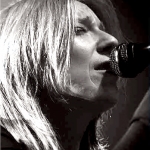
|
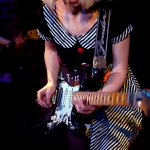
The Joy Formidable |
LATEST GALLERY IMAGES

Where Israel Goes, Misery Follows 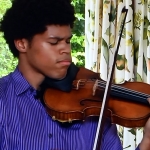
The Kanneh-Masons |
|
|


